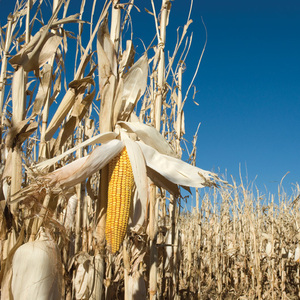Slight increase projected for corn use for ethanol production

December 7, 2015
BY Susanne Retka Schill
The final rulemaking for the 2016 renewable fuel standard (RFS) won’t result in much more demand for corn, according to Darrell Good’s weekly outlook, “Ethanol Production and Corn Consumption Prospects for 2016,” in the FarmDocDaily.
Adding weekly estimates for October and November to the first nine months of 2015 as reported by the U.S. Energy Information Agency, plus a slightly smaller estimate for December, Good suggests total fuel ethanol production this year will reach around 14.745 billion. “Production at that level will require about 5.25 billion bushels of feedstock, mostly corn, for conventional ethanol production in 2015,” he says.
Domestic consumption estimates, he continues, based on production, imports, exports and changes in stocks, were 4 percent larger in the first nine months of 2015, compared to the same period a year earlier. Consumption in 2014 was a record 13.444 billion gallons.
Advertisement
Looking at the year ahead, the recently released numbers for the RFS put the implied requirement for conventional ethanol at 14.5 billion gallons, once advanced biofuel requirements are subtracted. That is up from 14.05 billion gallons in 2015 and 14.0 billion gallons in the preliminary rulemaking for 2016.
Gasoline consumption forecasts play a role as well. “If the 2016 gasoline consumption forecast is correct, the E10 blend wall will be 13.996 billion gallons. Since some gasoline is consumed without ethanol and some with higher ethanol blends, the effective E10 blend wall is thought to be 13.856 billion gallons (9.9 percent of gasoline consumption),” Good said. Some of that will come from advanced ethanol, including cellulosic and imported Brazilian ethanol. “The EPA projects consumption of advanced ethanol in 2015 at only 85 million gallons. We estimate that about 70 million gallons of that total will be Brazilian ethanol. That consumption is projected to increase to 249 million gallons in 2016 based on much larger imports of Brazilian ethanol in response to changing fuel standards in California. That would leave the conventional ethanol E10 blend wall at 13.607 billion gallons.”
Advertisement
Adding EPA estimates for E85 that would use about 296 million gallons of ethanol in the blend, would bring total consumption to 13.903 billion gallons, essentially the same as 2015. “The difference between the RFS requirement of 14.5 billion gallons and the projected consumption of 13.903 billion gallons (597 million gallons) would have to be met with some combination of retirement of RINs stocks, additional quantities of E85, or blending of additional quantities of advanced biofuels.”
These estimates could be conservative, he adds, pointing to some projections of domestic gasoline consumption that say it may be 2 billion gallons larger than the current EIA estimates. Projections of ethanol imports may be too high, he says, “depending on how California fuel policy unfolds.” In the end, domestic conventional ethanol consumption in 2016 could be about 200 million gallons larger than current projections, requiring an additional 70 million bushels of feedstock. “A larger increase in feedstock consumption will require some combination of a larger increase in domestic gasoline consumption, larger consumption of higher ethanol blends, and an increase in ethanol exports,” Good said.
Related Stories
President Trump on July 4 signed the “One Big Beautiful Bill Act.” The legislation extends and updates the 45Z credit and revives a tax credit benefiting small biodiesel producers but repeals several other bioenergy-related tax incentives.
CARB on June 27 announced amendments to the state’s LCFS regulations will take effect beginning on July 1. The amended regulations were approved by the agency in November 2024, but implementation was delayed due to regulatory clarity issues.
The USDA’s National Agricultural Statistics Service on June 30 released its annual Acreage report, estimating that 83.4 million acres of soybeans have been planted in the U.S. this year, down 4% when compared to 2024.
SAF Magazine and the Commercial Aviation Alternative Fuels Initiative announced the preliminary agenda for the North American SAF Conference and Expo, being held Sept. 22-24 at the Minneapolis Convention Center in Minneapolis, Minnesota.
Saipem has been awarded an EPC contract by Enilive for the expansion of the company’s biorefinery in Porto Marghera, near Venice. The project will boost total nameplate capacity and enable the production of SAF.
Upcoming Events










